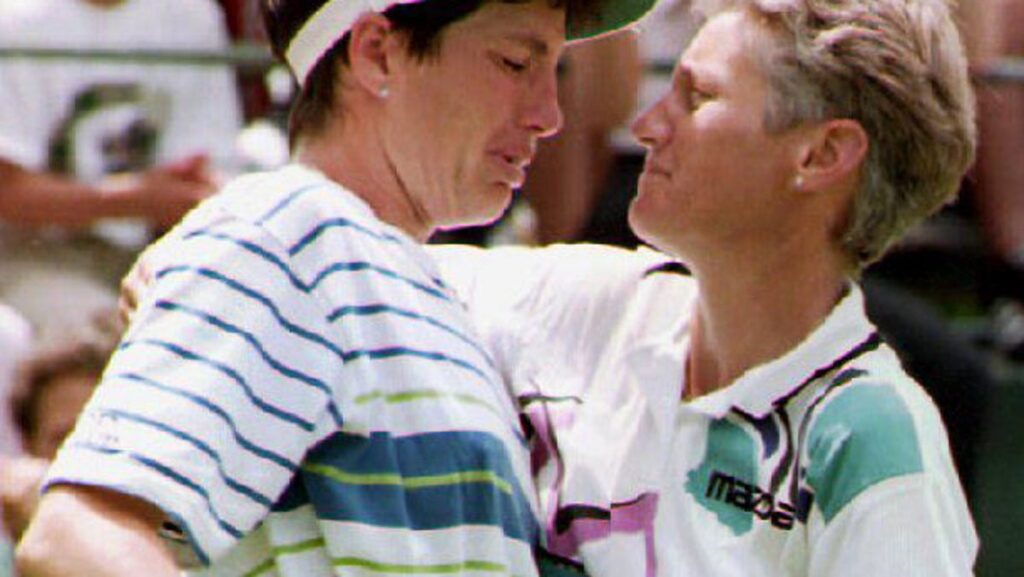OAKMONT, Pa. — Bobby Jones, Jack Nicklaus, and Johnny Miller are all part of the legendary players who won at Oakmont Country Club. Count fellow World Golf Hall of Fame member Patty Sheehan among that exclusive club. After falling short in heartbreaking fashion multiple times at the U.S. Women’s Open, including squandering a 12-stroke lead in 1990, Sheehan defeated another Hall of Famer, Juli Inkster, in an 18-hole playoff at Oakmont in 1992 to win the title she so desperately wanted.
“It certainly was something that I’d always wanted to do is to win the U.S. Open, and it was always so difficult because it’s the hardest golf course we play all year long,” she told Golfweek.
Inkster agrees with Scottie Scheffler’s assessment of Oakmont as one of the toughest courses she’s ever played.
Tough, she said, but fair.
“You know, you had to hit the ball in the right spots,” said Inkster. “It’s kind of a golf course where – usually you play to the front of the greens because then you have uphill chips. At Oakmont, you want to play from the pin beyond, because the back — you’re chipping back uphill. So I always thought it was kind of reverse of what we always played.”
Here’s more from Sheehan on how she slayed the beast that is Oakmont.
GWK: How did you solve the riddle that is Oakmont?
PS: I’m not typically a very straight driver of the ball. I don’t think I had the best short game, but I worked on it very hard a lot at home, and I would try to find the most difficult shots around the golf course and try to hit them.
Tried to feel a little more comfortable with my short game, and it started getting better. It really was amazing how much better it got. Honestly, that’s probably one of the reasons why I won at Oakmont because I was not hitting – it didn’t seem like I was hitting a lot of greens in regulation and having easy pars. That just doesn’t happen at Oakmont. So it came in handy.
GWK: Did you have any other secret weapon that week?
PS: When I got to Oakmont on that Monday of tournament week, my caddie, Carl Leib, had already been there for like two weeks trying to figure out the golf course and watching members play. He really did his homework.
It was one of those weeks where we had a lot of rain. A lot of rain at Oakmont makes it just miserable because you’ve got thick rough and now they can’t get in there and mow it. It was getting harder day by day. He’s like, ‘OK, this is the deal. It’s supposed to rain here this week, and we’re going to hit a lot of 3-woods off the tees, try to stay in the fairway and try to hit as many greens as we can. This is a beast of a golf course.’
So he really had it mapped out for me, and I was really impressed with his homework. It was a combination of working pretty hard on my short game for years and then getting Carl as my caddie and him doing all of his pregame work. It all came together that week.
GWK: What did it mean to you to win the U.S. Women’s Open that week?
PS: I was pretty happy because two years before that, I lost the Open. I shouldn’t have lost it, but I did. I got hypoglycemic on Sunday, and we were playing 36 holes in Atlanta. July is never fun. It’s hot and humid and horrible. So I got pretty sick that Sunday. At one point, I was up by 12 shots, and I ended up losing. So it hurt quite a bit, and I learned a lot from that. So coming back a couple years later and being able to get it under my belt was probably the biggest turning point in getting to the Hall of Fame. I think the Hall of Fame is probably the pinnacle of my career, but winning the U.S. Open was definitely one of those turning points for me. I felt like after I got an Open under my belt that I could probably get into the Hall of Fame because at that point I’d had quite a few tournament wins.
GWK: What did you learn about yourself that week?
PS: I learned that I needed to pay attention to my nutrition. For some reason, I didn’t pay much attention to my nutrition throughout my career until that point, and I know that I lost many tournaments because I was not eating properly or drinking enough on the golf course. I cleaned up my act quite a bit and started realizing that, oh, yeah, I can get through 18 holes without crashing at 13 or 14 or 15, which is basically what I would do almost every round. I never really gave it much thought. I just thought, well, shoot, I just need to work out more, I need to get in better shape. That wasn’t it at all. I was in pretty good shape. Just didn’t have the fuel on board to get through 18 holes.
Read the full article here


